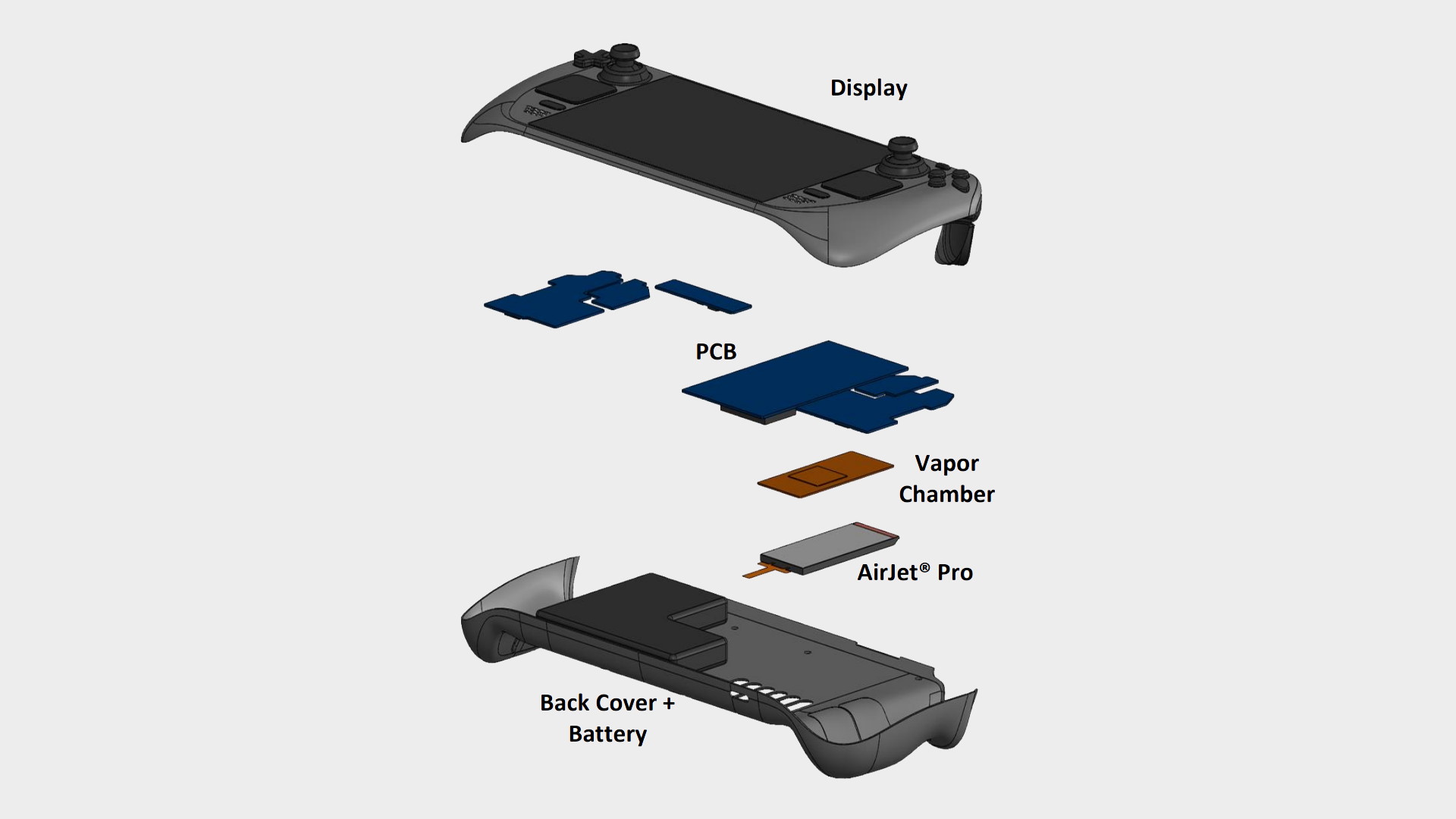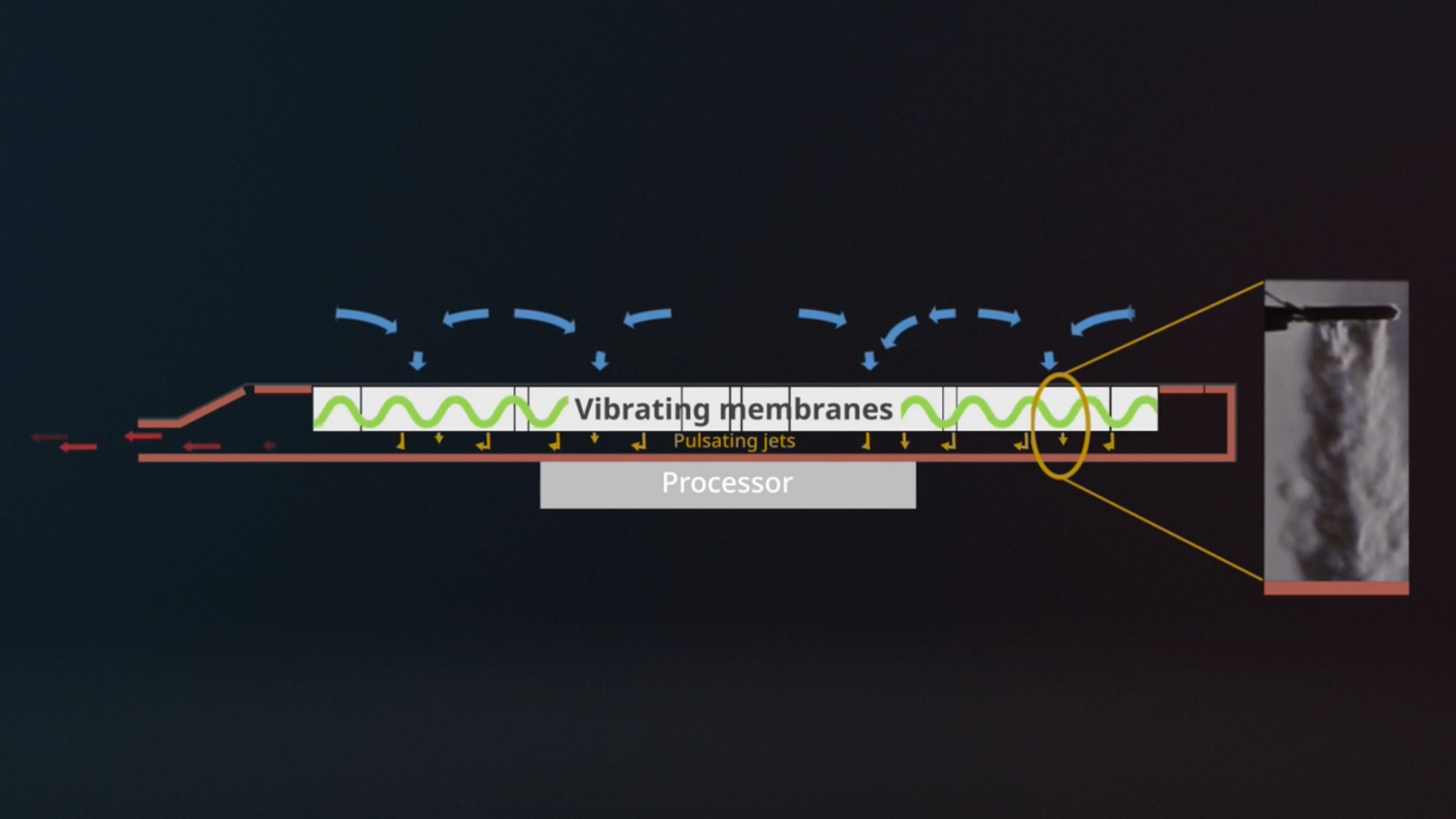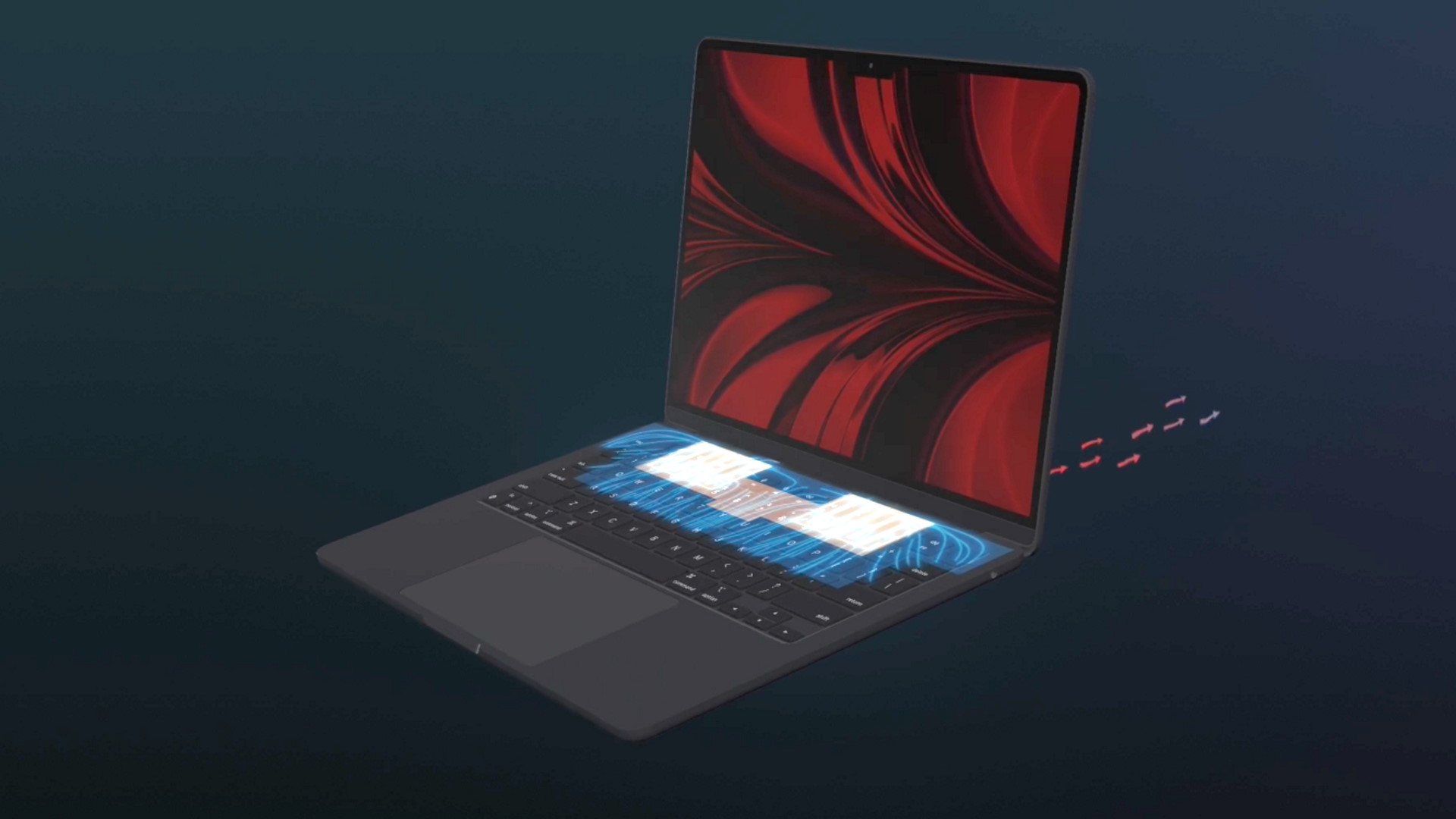This Intel-collaborative company passively cooled a Steam Deck
Sorry... "Handheld Gaming Device." Anyways, it's also got sights set on ending laptop cooling fans, though gaming laptops might be a step too far.

Frore Systems is a name you probably haven't heard before, but if it does indeed manage to signal the end for laptop cooling fans, then I for one will certainly be singing its praises. The company has recently come to our attention because it just unveiled the AirJet, what it calls the "world's first solid-state chip for active device cooling."
The little device looks like it could almost be a like-for-like swap with a laptop fan, sporting almost the same dimensions, but potentially offering far higher cooling performance, while also being far quieter.
The idea is that multiple AirJet modules can work together atop a traditional vapour chamber and its innovative air cooling tech can superchill an attached processor. The bizarre-sounding idea is that a set of vibrating membranes within the AirJet module generate a powerful sucked down flow of air that it draws in from the top and then expels across the heat spreader, pulling heat away from the vapour chamber, and finally expelling it from a certain point.
Both the chassis and PCB reportedly have to be designed with this system in mind, but it will mean the end to intake vents on the underside of a high-end laptop as it requires only a set of three vents on the rear of the device. One longer intake and a pair of exhaust vents either side of it.
Obviously, we have to take Frore System's word for all this right now as we've not had a chance to check out any notebooks with the AirJet inside, so this is all based on what the company itself is reporting as the performance of its new cooling technology. But if it performs as well as it claims, then it could be a bit of a game-changer for notebooks.
The AirJet Mini is designed to go into thin and light notebooks and tablets, with four of them able to be baked into a 12-inch laptop and a pair going into a 10-inch tablet. With four of them in a laptop Frore Systems claims it can keep a processor running at a sustained 20W with a "silent" 27dBA noise level. And if your mobile chip has a thermal limit of 10W the theory is that it could double processor performance.
The AirJet Pro is its bigger sibling, and is designed for larger laptops, like an ultraportable 15-inch device. The idea is that three Pro versions could be jammed inside, and working in unison they could cover a thermal limit of 28W with a 29dBA noise level.
Keep up to date with the most important stories and the best deals, as picked by the PC Gamer team.


But, in a single "Hand Held Gaming Device" case study [pdf warning], it uses a single AirJet Pro to cool down the 15W APU at its heart. You don't have to be a genius to recognise the Steam Deck in the press materials it's put out to sell the tech. It makes sense; the Deck is an easily opened device, and is totally open to be messed around with.
And if the AirJet can shut Valve's handheld the hell up, while still keeping it running cool at top speeds, then it will be a welcome thing. The device is active, so has to be powered, too, but at 1.75W max power consumption for an AirJet Pro, that might not be hugely different to the power use of a fan setup.
Intel's reportedly onboard already, aiming to sport the AirJet cooling system in its Evo platform. Josh Newman, VP of mobile innovation at Intel is quoted as saying: "We collaborated deeply with Frore Systems to integrate AirJet into the Intel Evo platform.
"People want attractive, innovative notebooks, with better performance than ever before, and they won’t accept loud fan noise or hot devices. AirJet makes faster, quieter, thinner and cooler devices possible."


Best AIO cooler for CPUs: All-in-one, and one for all... components.
Best CPU air coolers: CPU fans that don't go brrr.
The elephant in the room, however, is any mention of GPUs. All the talk seems to be around either CPUs or APUs. Mobile graphics cards are the real heat source of a gaming laptop, and despite Frore's opening gambit to us of "Gaming laptops and more just got way cooler…" I'm not sure how much impact this will have on mobile gaming notebooks.
If it takes three AirJet Pro modules to keep a 28W CPU running, how many is it going to need to power a 35W CPU with even the lowest spec RTX 3060 GPU at 60W? The answer looks like it will be around ten. Which feels like a lot. And probably too much to reasonably hope Frore would be able to squeeze into an ultra portable gaming laptop.
Still, if it can make our standard notebooks all but silent and do the same to gaming handheld such as the Steam Deck, then it will certainly be on the right track. Fingers crossed we might see some AirJet action at CES 2023 in January.

Dave has been gaming since the days of Zaxxon and Lady Bug on the Colecovision, and code books for the Commodore Vic 20 (Death Race 2000!). He built his first gaming PC at the tender age of 16, and finally finished bug-fixing the Cyrix-based system around a year later. When he dropped it out of the window. He first started writing for Official PlayStation Magazine and Xbox World many decades ago, then moved onto PC Format full-time, then PC Gamer, TechRadar, and T3 among others. Now he's back, writing about the nightmarish graphics card market, CPUs with more cores than sense, gaming laptops hotter than the sun, and SSDs more capacious than a Cybertruck.

